Devices and pressure sources for administration of nasal continuous positive airway pressure (NCPAP) in preterm neonates
- PMID: 18254011
- PMCID: PMC7004254
- DOI: 10.1002/14651858.CD002977.pub2
Devices and pressure sources for administration of nasal continuous positive airway pressure (NCPAP) in preterm neonates
Abstract
Background: Nasal continuous positive airway pressure (NCPAP) is used to support preterm infants recently extubated, those experiencing significant apnoea of prematurity and those with respiratory distress soon after birth as an alternative to intubation and ventilation. This review focuses exclusively on identifying the most effective pressure source and interface for NCPAP delivery in preterm infants.
Objectives: To determine which technique of pressure generation and which type of nasal interface for NCPAP delivery most effectively reduces the need for additional respiratory support in preterm infants extubated to NCPAP following intermittent positive pressure ventilation (IPPV) for respiratory distress syndrome (RDS) or in those treated with NCPAP soon after birth.
Search strategy: The strategy included searches of MEDLINE (1966 - 2006), the Cochrane Central Register of Controlled Trials (CENTRAL, The Cochrane Library, Issue 4, 2006) CINAHL, abstracts from conference proceedings, cross-referencing of previous reviews and the use of expert informants.
Selection criteria: Randomised or quasi-randomised trials comparing different techniques of NCPAP pressure generation and/or nasal interfaces in preterm infants extubated to NCPAP following IPPV for RDS or treated with NCPAP soon after birth.
Data collection and analysis: Data was extracted and analysed by the first three authors. Dichotomous results were analysed using the relative risk (RR), risk difference (RD) and number needed to treat (NNT).
Main results: 1. Preterm infants being extubated to NCPAP following a period of IPPV for RDS:Meta-analysis of the results from Davis 2001 and Roukema 1999a demonstrated that short binasal prongs are more effective at preventing re-intubation than single nasal or nasopharyngeal prongs [typical RR 0.59 (CI: 0.41, 0.85), typical RD -0.21 (CI: -0.35, -0.07), NNT 5 (CI: 3, 14)]. In one study comparing short binasal prong devices (Sun 1999), the re-intubation rate was significantly lower with the Infant Flow Driver than with the Medicorp prong [RR 0.33 (CI: 0.17, 0.67), RD -0.32 (CI: -0.49, -0.15), NNT 3 (CI: 2, 7)]. The other study comparing short binasal prong devices (Infant Flow Driver versus INCA prongs, Stefanescu 2003) demonstrated no significant difference in the re-intubation rate but did show a significant reduction in the total days in hospital in the Infant Flow Driver group [MD -12.60 (95% CI: -22.81, -2.39) days].2. Preterm infants primarily treated with NCPAP soon after birth:In the one trial identified, Mazzella 2001 found a significantly lower oxygen requirement and respiratory rate in those randomised to short binasal prongs when compared with CPAP delivered via nasopharyngeal prong. The requirement for intubation beyond 48 hours from randomisation was not assessed.3. Studies randomising preterm infants to different NCPAP systems using broad inclusion criteriaThe studies of Rego 2002 and Buettiker 2004 did not examine the primary outcomes of this review. Of the secondary outcomes, Rego 2002 demonstrated a significantly higher incidence of nasal hyperaemia with the use of the Argyle prong compared with Hudson prongs [RR 2.39 (95% CI: 1.27, 4.50), RD 0.28 (95% CI: 0.10, 0.46)]. One study comparing different techniques of pressure generation is awaiting further assessment as it is currently available in abstract form only.
Authors' conclusions: Short binasal prong devices are more effective than single prongs in reducing the rate of re-intubation. Although the Infant Flow Driver appears more effective than Medicorp prongs the most effective short binasal prong device remains to be determined. The improvement in respiratory parameters with short binasal prongs suggests they are more effective than nasopharyngeal CPAP in the treatment of early RDS. Further studies incorporating longer-term outcomes are required. Studies are also needed to determine the optimal pressure source for the delivery of NCPAP.
Conflict of interest statement
Dr Peter Davis and Brenda Faber are authors of one of the trials included in this review.
Figures
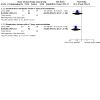
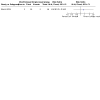
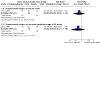
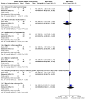
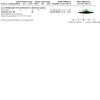
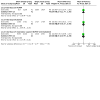


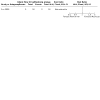
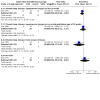
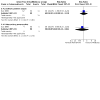

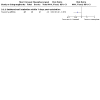

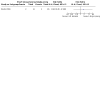
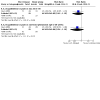
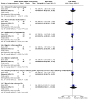
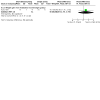

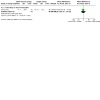
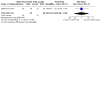
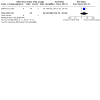
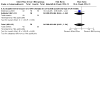
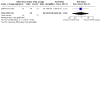
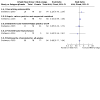
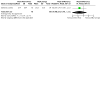
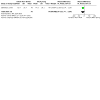
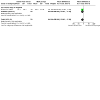


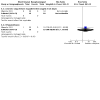
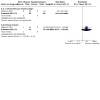
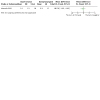

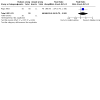
Update of
-
Devices and pressure sources for administration of nasal continuous positive airway pressure (NCPAP) in preterm neonates.Cochrane Database Syst Rev. 2002;(4):CD002977. doi: 10.1002/14651858.CD002977. Cochrane Database Syst Rev. 2002. Update in: Cochrane Database Syst Rev. 2008 Jan 23;(1):CD002977. doi: 10.1002/14651858.CD002977.pub2. PMID: 12519580 Updated.
References
References to studies included in this review
Buettiker 2004 {published data only}
-
- Buettiker V, Hug MI, Baenziger O, Meyer C, Frey B. Advantages and disadvantages of different nasal CPAP systems in newborns. Intensive Care Medicine 2004;30:926-30. - PubMed
Davis 2001 {published and unpublished data}
-
- Davis P, Davies M, Faber B. A randomised controlled trial of two methods of delivering nasal continuous positive airway pressure after extubation to infants weighing less than 1000g: binasal (Hudson) versus single nasal prongs. Archives of Disease in Childhood Fetal Neonatal Ed 2000;85:F82-5. - PMC - PubMed
Mazzella 2001 {published data only}
-
- Mazzella M, Bellini C, Calevo MG, Campone F, Massocco D, Mezzano P, Zullino E, Scopesi F, Arioni C, Bonacci W, Serra G. A randomised control study comparing the Infant Flow Driver with nasal continuous positive airway pressure in preterm infants. Archives of Disease in Childhood Fetal Neonatal Ed 2001;85:F86-90. - PMC - PubMed
Rego 2002 {published data only}
-
- Rego MAC, Martinez FE. Comparison of two nasal prongs for application of continuous positive airway pressure in neonates. Pediatric Critical Care Medicine 2002;3:239-43. - PubMed
Roukema 1999a {published data only}
-
- Roukema H, O'Brien K, Nesbitt K, Zaw W. A randomized controlled trial of Infant Flow continuous positive airway pressure (CPAP) versus nasopharyngeal CPAP in the extubation of babies <=1250g (abstract). Pediatric Research 1999;45:318A.
Stefanescu 2003 {published data only}
-
- Stefanescu BM, Murphy WP, Hansell BJ, Fuloria M, Morgan TM, Aschner JL. A randomized, controlled trial comparing two different continuous positive airway pressure systems for the successful extubation of extremely low birth weight infants. Pediatrics 2003;112:1031-8. - PubMed
Sun 1999 {published and unpublished data}
-
- Sun SC, Tien HC. Randomized controlled trial of two methods of nasal CPAP (NCPAP): Flow Driver vs conventional NCPAP (abstract). Pediatric Research 1999;45:322A.
References to studies excluded from this review
Ahluwalia 1998 {published data only}
-
- Ahluwalia JS, White DK, Morley CJ. Infant Flow Driver or single prong nasal continuous positive airway pressure: short-term physiological effects. Acta Paediatrica 1998;87:325-7. - PubMed
Bhandari 1996 {published data only}
-
- Bhandari V, Rogerson S, Barfield C, Yu V, Rowe JC. Nasal versus naso-pharyngeal continuous positive airway pressure (CPAP) use in preterm neonates (abstract). Pediatric Research 1996;39 (Suppl):196A.
Campbell 2004 {published data only}
-
- Campbell DM, Shah P, Shah V, Kelly E. High flow nasal cannula CPAP versus infant flow nasal CPAP in newly-extubated neonates < 1250 g (abstract). Pediatric Research 2004;56:472A.
Courtney 2001 {published data only}
-
- Courtney SE, Pyon KH, Saslow JG, Arnold GK, Pandit PB, Habib RH. Lung recruitment and breathing pattern during variable versus continuous flow nasal continuous positive airway pressure in premature infants: an evaluation of three devices. Pediatrics 2001;107:304-8. - PubMed
Jonsson 1998 {published data only}
-
- Jonsson B, Repfennig L, Eriksson M, Lagercrantz H. The Scandanavian mode of respiratory therapy: a physiologic study of the Infant Flow nasal CPAP (abstract). Pediatric Research 1998;43:178A.
Kavvadia 2000 {published data only}
-
- Kavvadia V, Greenough A, Dimitriou G. Effect on lung function of continuous positive airway pressure administered either by Infant Flow Driver or a single nasal prong. European Journal of Pediatrics 2000;159:289-92. - PubMed
Liptsen 2005 {published data only}
-
- Liptsen E, Aghai ZH, Pyon KH, Saslow JG, Nakhla T, Long J, Steele AM, Habib RH, Courtney SE. Work of breathing during nasal continuous positive airway pressure in preterm infants: a comparison of bubble vs variable-flow devices. Journal of Perinatology 2005;25:453-8. - PubMed
Massaro 2005 {published data only}
-
- Massaro AN, Abdel-Haq I, Aly H. Underwater seal "bubble CPAP" versus ventilator derived CPAP: does mode of delivery make a difference in clinical outcome? (abstract). E-PAS [www.pas-meeting.org/] 2005;57:2054.
Nair 2005 {published data only}
-
- Nair G, Karna P. Comparison of the effects of Vapotherm and nasal CPAP in respiratory distress in preterm infants (abstract). E-PAS [www.pas-meeting.org/] 2005;57:2054.
Narendran 2002 {published data only}
-
- Narendran V, Donovan EF, Hoath SB, Warner BB, Steichen JJ, Jobe AH. Comparison between early bubble CPAP and conventional CPAP in reducing the incidence of chronic lung disease (abstract). E-PAS [www.pas-meeting.org/] 2002;51:1960.
Pandit 2001 {published data only}
-
- Pandit PB, Courtney SE, Pyon KH, Saslow JG, Habib RH. Work of breathing during constant- and variable-flow nasal continuous positive airway pressure in preterm neonates. Pediatrics 2001;108:682-5. - PubMed
Pelligra 2006 {published data only}
-
- Pelligra G, Abdellatif MA, Lee SK. Comparison of clinical outcomes between two modes of CPAP delivery: underwater "bubble" versus conventional ventilator-derived (abstract). E-PAS [www.pas-meeting.org/] 2006;59:475.
Roukema 1999b {published data only}
-
- Roukema H, O'Brien K, Nesbitt K, Zaw W. A crossover trial of Infant Flow continuous positive airway pressure versus nasopharyngeal CPAP in the extubation of babies <= 1250 grams birthweight (abstract). Pediatric Research 1999;45:317A.
Sreenan 2001 {published data only}
-
- Sreenan C, Lemke RP, Hudson-Mason A, Osiovich H. High-flow nasal cannulae in the management of apnea of prematurity: a comparison with conventional nasal continuous positive airway pressure. Pediatrics 2001;107:1081-3. - PubMed
Telenko 1999 {published data only}
-
- Telenko T, Peliowski A, Hudson-Mason A. Continuous positive airway pressure (CPAP) in the treatment of apnea of prematurity: a comparison of two CPAP delivery systems (abstract). Pediatric Research 1999;45:228A.
Trevisanuto 2005 {published data only}
-
- Trevisanuto D, Grazzina N, Doglioni N, Ferrarese P, Marzari F, Zanardo V. A new device for administration of continuous positive airway pressure in preterm infants: comparison with a standard nasal CPAP continuous positive airway pressure system. Intensive Care Medicine 2005;31:859-64. - PubMed
Yong 2005 {published data only}
References to studies awaiting assessment
Colaizy 2004 {published data only}
-
- Colaizy TT, McEvoy C, Crichton C, Freitag BC, Gilhooly J, Pillers DM, Smith SA, Wallen L. Bubble vs. conventional CPAP: a prospective, randomized, pilot study (abstract). Pediatric Academic Societies [www.pas-meeting.org/] 2004;55:2646.
Additional references
Ackerman 1974
-
- Ackerman BD, Stein MP, Sommer JS, Schumacher M. Continuous positive airway pressure applied by means of a tight-fitting mask. Journal of Pediatrics 1974;85:408-11. - PubMed
Agostino 1973
-
- Agostino R, Orzalesi M, Nodari S, Mendicini M, Conca L, Savignoni PG, Picece-Bucci S, Calliumi G, Bucci G. Continuous positive airway pressure by nasal cannula in the respiratory distress syndrome of the newborn. Pediatric Research 1973;7:50.
Ahlstrom 1973
-
- Ahlstrom H, Jonson B, Svenningsen NW. Continuous positive airway pressure with a face chamber in early treatment of idiopathic respiratory distress syndrome. Acta Paediatrica Scandinavica 1973;62:433-6. - PubMed
Annibale 1994
-
- Annibale DJ, Hulsey TC, Engstrom PC, Wallin LA, Ohning BL. Randomized, controlled trial of nasopharyngeal continuous positive airway pressure in the extubation of very low birth weight infants. Journal of Pediatrics 1994;124:455-60. - PubMed
Barrie 1972
-
- Barrie H. Simple method of applying continuous positive airway pressure in respiratory-distress syndrome. Lancet 1972;1:776-7. - PubMed
Benveniste 1976
-
- Benveniste D, Berg O, Pedersen JE. A technique for delivery of continuous positive airway pressure to the neonate. Journal of Pediatrics 1976;88:1015-19. - PubMed
Boros 1976
-
- Boros SJ, Reynolds JW. Prolonged apnea of prematurity: Treatment with continuous distending airway pressure delivered by nasopharyngeal tube. Clinical Pediatrics 1976;15:123-34. - PubMed
Caliumi‐Pell. 1974
Chernick 1973
-
- Chernick V. Continuous distending pressure in hyaline membrane disease: of devices, disadvantages, and a daring study. Pediatrics 1973;52:114-15. - PubMed
Cox 1974
-
- Cox JMR, Boehm JJ, Millare EA. Individual nasal masks and intranasal tubes: A non-invasive neonatal technique for the delivery of continuous positive airway pressure (CPAP). Anaesthesia 1974;29:597-600. - PubMed
Davis 2000
-
- Davis PG, Henderson-Smart DJ. Nasal continuous positive airways pressure immediately after extubation for preventing morbidity in preterm infants. Cochrane Database of Systematic Reviews 2000, Issue 3. - PubMed
De Paoli 2002
Field 1985
-
- Field D, Vyas H, Milner AD, Hopkin IE. Continuous positive airway pressure via a single nasal catheter in preterm infants. Early Human Development 1985;11:275-80. - PubMed
Gaon 1999
Goldman 1979
-
- Goldman SL, Brady JP, Dumpit FM. Increased work of breathing associated with nasal prongs. Pediatrics 1979;64:160-4. - PubMed
Gregory 1971
-
- Gregory GA, Kitterman JA, Phibbs RH, Tooley WH, Hamilton WK. Treatment of the idiopathic respiratory-distress syndrome with continuous positive airway pressure. New England Journal of Medicine 1971;284:1333-40. - PubMed
Harris 1972
-
- Harris TR. Continuous positive airway pressure applied by face mask (abstract). Pediatric Research 1972;6:410.
Harris 1976
-
- Harris H, Wilson S, Brans Y, Wirtschafter D, Cassady G. Nasal continuous positive airway pressure. Improvement in arterial oxygenation in hyaline membrane disease. Biology of the Neonate 1976;29:231-7. - PubMed
Higgins 1991
-
- Higgins RD, Richter SE, Davis JM. Nasal continuous positive airway pressure facilitates extubation of very low birth weight neonates. Pediatrics 1991;88:999-1003. - PubMed
Kamper 1990
-
- Kamper J, Ringsted C. Early treatment of idiopathic respiratory distress syndrome using binasal continuous positive airway pressure. Acta Paediatrica Scandinavica 1990;79:581-6. - PubMed
Kattwinkel 1973
-
- Kattwinkel J, Fleming D, Cha CC, Fanaroff AA, Klaus MH. A device for administration of continuous positive airway pressure by the nasal route. Pediatrics 1973;52:131-4. - PubMed
Klausner 1996
-
- Klausner JF, Lee AY, Hutchison AA. Decreased imposed work with a new nasal continuous positive airway pressure device. Pediatric Pulmonology 1996. - PubMed
Krouskop 1975
-
- Krouskop RW, Brown EG, Sweet AY. The early use of continuous positive airway pressure in the treatment of idiopathic respiratory distress syndrome. Journal of Pediatrics 1975;87:263-7. - PubMed
Lee 1998
-
- Lee KS, Dunn MS, Fenwick M, Shennan AT. A comparison of underwater bubble continuous positive airway pressure with ventilator-derived continuous positive airway pressure in premature neonates ready for extubation. Biology of the Neonate 1998;73:69-75. - PubMed
Locke 1991
-
- Locke R, Greenspan JS, Shaffer TH, Rubenstein SD, Wolfson MR. Effect of nasal CPAP on thoracoabdominal motion in neonates with respiratory insufficiency. Pediatric Pulmonology 1991;11:259-64. - PubMed
Locke 1993
-
- Locke RG, Wolfson MR, Shaffer TH, Rubenstein SD, Greenspan JS. Inadvertent administration of positive end-distending pressure during nasal cannula flow. Pediatrics 1993;91:135-8. - PubMed
Loftus 1994
-
- Loftus BC, Ahn J, Haddad J. Neonatal nasal deformities secondary to nasal continuous positive airway pressure. Laryngoscope 1994;104:1019-22. - PubMed
Martin 1977
-
- Martin RJ, Nearman HS, Katona PG, Klaus MH. The effect of a low continuous positive airway pressure on the reflex control of respiration in the preterm infant. Journal of Pediatrics 1977;90:976-81. - PubMed
Miller 1985
-
- Miller MJ, Carlo WA, Martin RJ. Continuous positive airway pressure selectively reduces obstructive apnea in preterm infants. Journal of Pediatrics 1985;106:91-4. - PubMed
Miller 1990
-
- Miller MJ, DiFiore JM, Strohl KP, Martin RJ. Effects of nasal CPAP on supraglottic and total pulmonary resistance in preterm infants. Journal of Applied Physiology 1990;68:141-6. - PubMed
Moa 1988
-
- Moa G, Nilsson K, Zetterstrom H, Jonsson LO. A new device for administration of nasal continuous positive airway pressure in the newborn: An experimental study. Critical Care Medicine 1988;16:1238-42. - PubMed
Novogroder 1973
-
- Novogroder M, MacKuanying N, Eidelman AI, Gartner LM. A simple and efficient method of delivering continuous positive airway pressure. Journal of Pediatrics 1973;82:1059-62. - PubMed
Pandit 1999
-
- Pandit PB, Pyon KH, Courtney SE, Habib RH. Inspiratory work of breathing with a demand flow vs constant flow nasal continuous positive airway pressure device in preterm neonates (abstr). Pediatric Research 1999;45:314A: 1850.
Pape 1976
-
- Pape KE, Armstrong DL, Fitzhardinge PM. Central nervous system pathology associated with mask ventilation in the very low birth weight infant: a new etiology for intracerebellar hemorrhages. Pediatrics 1976;58:473-83. - PubMed
Pedersen 1994
-
- Pedersen JE, Nielsen K. Oropharyngeal and esophageal pressures during mono- and binasal CPAP in neonates. Acta Paediatrica 1994;83:143-9. - PubMed
Rhodes 1973
-
- Rhodes PG, Hall RT. Continuous positive airway pressure delivered by face mask in infants with the idiopathic respiratory distress syndrome: a controlled study. Pediatrics 1973;52:1-5. - PubMed
Richardson 1978
-
- Richardson CP, Jung AL. Effects of continuous positive airway pressure on pulmonary function and blood gases of infants with respiratory distress syndrome. Pediatric Research 1978;12:771-4. - PubMed
Robertson 1996
So 1992
-
- So BH, Shibuya K, Tamura M, Watanabe H, Kamoshita S. Clinical experience in using a new type of nasal prong for administration of N-CPAP. Acta Paediatrica Japonica 1992;34:328-33. - PubMed
Subramaniam 2000
-
- Subramaniam P, Henderson-Smart DJ, Davis PG. Prophylactic nasal continuous positive airways pressure for preventing morbidity in very preterm infants. Cochrane Database of Systematic Reviews 2000, Issue 3. - PubMed
Vert 1973
-
- Vert P, Andre M, Sibout M. Continuous positive airway pressure and hydrocephalus (letter). Lancet 1973;2:319. - PubMed
Wung 1975
-
- Wung JT, Driscoll JM, Epstein RA, Hyman AI. A new device for CPAP by nasal route. Critical Care Medicine 1975;3:76-8. - PubMed
Yu 1977
-
- Yu VYH, Rolfe P. Effect of continuous positive airway pressure breathing on cardiorespiratory function in infants with respiratory distress syndrome. Acta Paediatrica Scandinavica 1977;66:59-64. - PubMed
References to other published versions of this review
De Paoli 2002a
-
- De Paoli AG, Davis PG, Faber B, Morley CJ. Devices and pressure sources for administration of nasal continuous positive airway pressure (NCPAP) in preterm neonates. Cochrane Database of Systematic Reviews 2002, Issue 4. - PubMed
Publication types
MeSH terms
LinkOut - more resources
Full Text Sources
Medical
Miscellaneous

